By Nuño Rodríguez, political scientist
For decades, worldwide media has been announcing the apocalyptic danger of climate change. Most media sources disseminate the information produced by countless NGOs and foundations of dubious legitimacy and dubious funding. The media narrative presents itself as incontestable and unidirectional: co2 emissions from human industry are causing climate change. Estimates speak of an increase in temperature of 1.5 degrees.
In unison with this widespread narrative, the International Energy Agency (IEA) has presented a protocol to reduce polluting emissions by 2050. To achieve such a laudable goal, the agency proposes to reduce dependence on fossil fuels and increase the production of renewable energy. Solar, wind, and tidal power, together with low-emission fuels (such as hydrogen and ammonia), will be responsible for moving the world. An electrified world would depend directly on a continuously operating generator system connected to a global electricity grid; light and heavy transport, industrial use, domestic use, civil use, and everything working simultaneously in the same grid. In short, Europe (and the world) has begun a transition from a stable to an unstable energy system. Vast amounts of money will have to be invested in moving the world from fossil to green energy, which no one living off the public purse wants to miss out on.
It is not my point to discuss to what extent the justifications for this energy paradigm shift are accurate, nor to what extent the measures are adequate. When the media present you with an apocalyptic future and give you a roadmap to avoid it, questioning the apocalypse makes you a foolish person who deserves to be ostracized.
Instead, I want to show the effects of the energy transition policies on international relations. It was foreseeable that provoking an energy transition would bring conflict and friction. The IEA proposes to invest 4 trillion dollars in the development and implementation of this type of renewable energy once the transition has begun. Do they want the change to be so fast that they propose removing fossil fuels without giving a solution to alternative energies? Any sensible person might think, “it would have been better to make that investment earlier and to have started the transition once there were alternatives.” And he would be right, which suggests that wisdom does not enter into the energy equation of international organizations. This lack of wisdom is probably why most countries that have signed the Net Zero by 2050 agreement are increasingly convinced that the targets set will not be achieved. States remain responsible for their energy supply and their national electricity grids, and national interests take precedence over the global interests established by the IEA.
No country is ready to reverse its energy consumption; that is an argument defended by technology and fossil fuel-producing countries. One of the main goals of the IEA is to make electricity the primary global energy source, to abandon combustion engines and replace them with electric motors or batteries. But electricity cannot be stored efficiently at the national, regional, or local level. Storage batteries cannot move a city for a day; not even a neighborhood, or village. Electricity has to be consumed instantly. Its storage is not sufficiently developed to make it the global energy standard. It is still an open line of research to decide whether hydrogen fuel cells or batteries are the most suitable for moving heavy vehicles. It doesn’t look like the world is ready to achieve full electrification within the time frame.
Renewable energies produce electricity depending on environmental parameters, such as sunlight or wind. They are fine for solar self-consumption in a home or business with day shifts, but you cannot energize a country with production that is dependent on weather conditions. With fuel, you can stockpile and supply on a regular and emergency basis, you can plan. With this stockpile, you can produce electricity when needed; you burn coal, gas, or biomass if you need electricity. To achieve stability in the production of electricity, the first thing to achieve is to produce fuels that can be stored and generate low emissions.
Wind energy production is beholden to wind. Solar energy production decreases in winter due to the reduction of solar hours and solar radiation. Nuclear energy is criminalized, and power plants are closed in many countries. Only France has announced that it will build more nuclear power plants. In parallel, ten EU countries have asked the European Commission to include nuclear energy as green energy. It is quite feasible that the EC will accept nuclear power within the Green Deal because it certainly does not generate emissions and will be necessary to meet the consumption needs of European countries. Hydropower production is also being attacked by environmental lobby groups on economic and ecological grounds. Despite being a means of producing energy that does not generate polluting emissions, it is alleged that the construction of reservoirs has modified ecosystems and forced the displacement of populations.
Similarly to the accumulation of fossil fuels, you can have a generation forecast that meets consumption needs with water storage. In Spain, licenses for hydroelectric production have already been canceled, and there has been widespread controversy over the massive emptying of water reservoirs by Iberdrola. This action is doubly dangerous since water is necessary for electricity production and the provision of human, agricultural, and livestock needs. So far, the Green Deal is banning fossil fuels and limiting the production of green energy with stable processes, such as water and nuclear, and is throwing us into dependence on unstable energies.
The European Union produces almost 70% of its energy from fossil fuels, and just 15% from renewables. Of fossil fuels, 98% of oil is imported and 89% of natural gas, making the EU energy dependent on other producing countries. This dependence has the bonus that import prices will determine electricity production prices in European countries. Consequently, the production of electricity by burning natural gas has become more expensive due to the rising gas price. Since 2016, 167 coal plants have closed in Europe, and 160 are about to close. The lobby group Europe Beyond Coal is one of the leading organizations pushing for a ban on coal-fired electricity generation. This pressure pushes all major energy groups to look for alternatives and investigate ways of low-emission energy production. Many of the companies that own coal-fired power plants are thinking of converting them to biomass-fired plants. This shift means moving from the worst option to the second-worst.
The alternative to burning natural gas or coal is to burn green fuels, such as biomass, ammonia, or hydrogen. The EU has taken its Green Deal very seriously and has set up international trading mechanisms based on pollutant emissions. The EU agreement will implement a series of customs regulations that will balance production prices between countries with environmental legislation and countries that lack this type of legislation. The commitment to green energy will disrupt all international trade in the coming years. But the application of pollutant emissions tariffs is causing a speculative emissions market that is increasing electricity prices in Europe, as the Spanish government has pointed out.
There are many stakeholders investing resources in producing green or synthetic fuels, which are replacing oil in all areas of industry. In 2019, large European companies invested around $2 billion in alternative energy sources. In 2021, that annual investment has risen to $4 billion, which means an increase of 10% to 20%. In the case of the Spanish company Repsol, investment in green energy has increased 35%. This increase in the commitment to green energy has a catalyst: the increase in the price of electricity produced by fossil fuels. In 2021, large European companies made combined purchases of green electricity 70% more than in 2020. Companies are looking for lower prices and less dependence on other countries from energy sources. All the electricity price increases are accelerating the energy transition, as well as instability in the energy market and legislative pressure forcing changes on end consumers. But there are still many technical needs to be perfected before a transition to clean energy can be made. In this sense, the energy think tank EMBER argues that within the national energy plans, there will not be a substantial change in the dependence on gas for electricity generation until 2040.
This maelstrom of the energy transition is altering production systems, consumption patterns, international relations, and geopolitics. The fossil fuel-producing countries mock the IEA’s green targets. They know that the targets are a pipe dream and still have a lot of power in the energy market. But even the big oil countries are trying to take advantage of the new market for green fuels and are announcing the opening of large hydrogen production plants. Despite knowing that the objectives are unfeasible within the established timetable, everyone knows that the energy transition is a firm commitment by all the global power groups and that the project will not be suspended. No matter how unfeasible it may seem.
Even European energy policy itself has insurmountable contradictions, as it is financing energy projects based on fossil fuels while penalizing importers who use them in their production. These energy projects based on fossil fuels are framed within the Projects of Common Interest (PCIs). One of these joint projects is to achieve a unified European electricity grid, whose progress can be followed through the actions of ENTSO-E, the European Network of Transmission System Operators for Electricity. A unified electricity grid for all EU countries would be a further step in the loss of sovereignty of the states. This could also be a way for Brussels to control the electricity consumption of mandate countries, which suggests that there will be countries reluctant to subordinate their national electricity grid to the decisions of the European authorities.
Governments, such as Austria’s, are announcing that an energy blackout is coming to the country and are preparing protocols for the population to cope with the lack of electricity. Spain is not immune to this fear either, as one of the gas pipelines bringing gas to Spain from Algeria has been shut down. This pipeline has been cut due to diplomatic problems between Morocco and Algeria. Only the pipeline that comes directly from the Maghreb country without passing through Morocco remains operational. The reduction in the flow of gas to Spain is a source of political and social tension, despite Algeria’s commitments to comply with the supply contracts and the announcements of the Minister of Energy Transition on the existence of sufficient reserves.
Meanwhile, many companies have to stop production because of electricity prices. Rising prices have forced production stoppages in factories worldwide, including in China. All these macroeconomic movements of energy transition and geopolitical transformations have greater resonance in lower-income households, which suffer the most from the price increases. Electricity bills have shot up for several reasons, such as the complex calculation of prices and greater dependence on unstable energy. It was expected that critical voices from Europe will be raised against the leading gas suppliers, such as Russia. European governments are asking Russia to replenish its fossil fuel reserves while at the same time refusing to approve NordStream2 for political reasons, such as the crisis with Ukraine. Many public agents claim that increasing gas flow to Europe would lower electricity production costs. Few voices criticize the poorly studied and poorly planned energy transition design, despite how clear it is becoming that such criticism is becoming imperative.







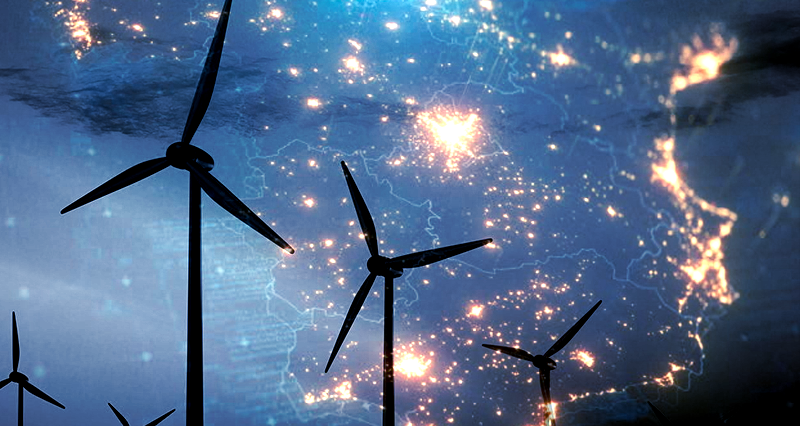
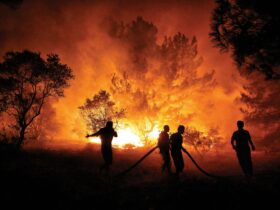
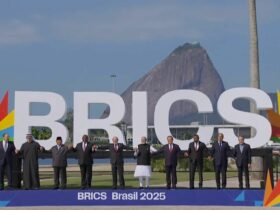


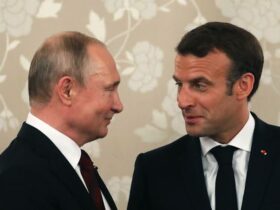
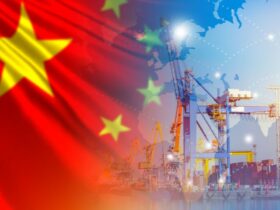
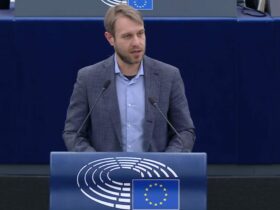
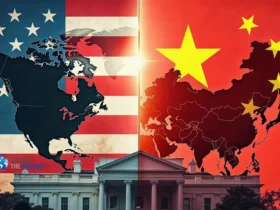

Leave a Reply